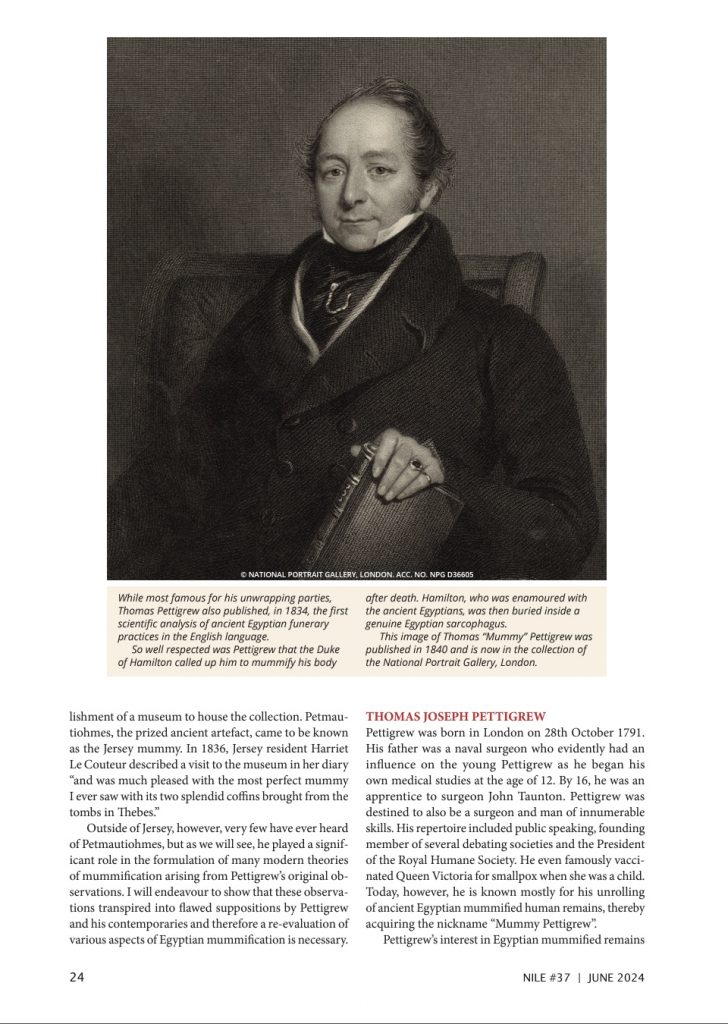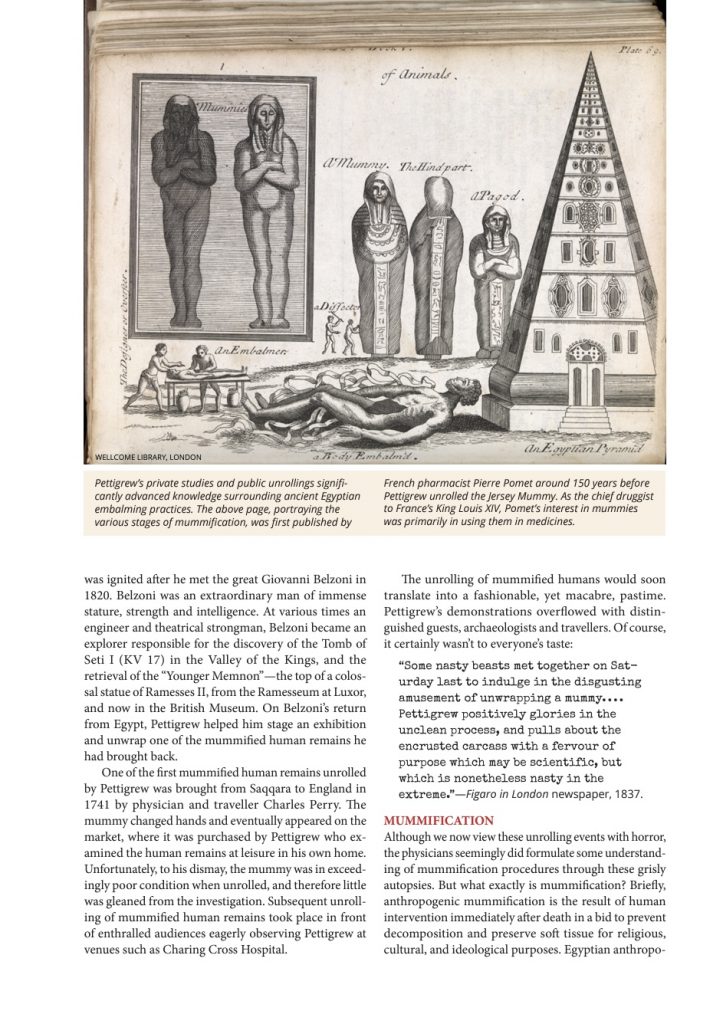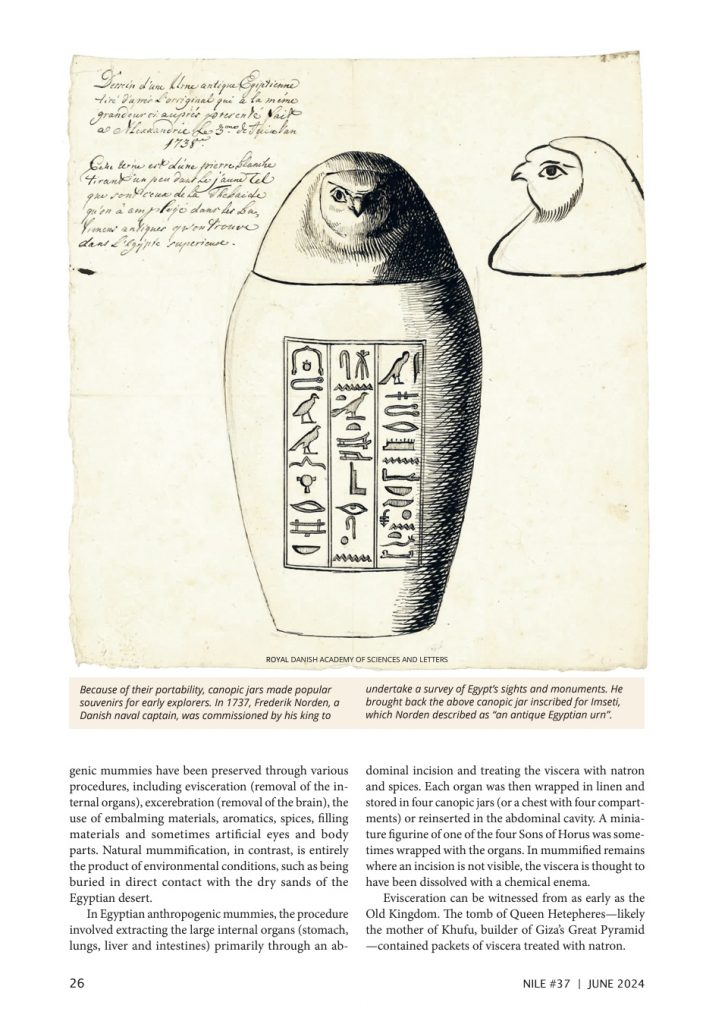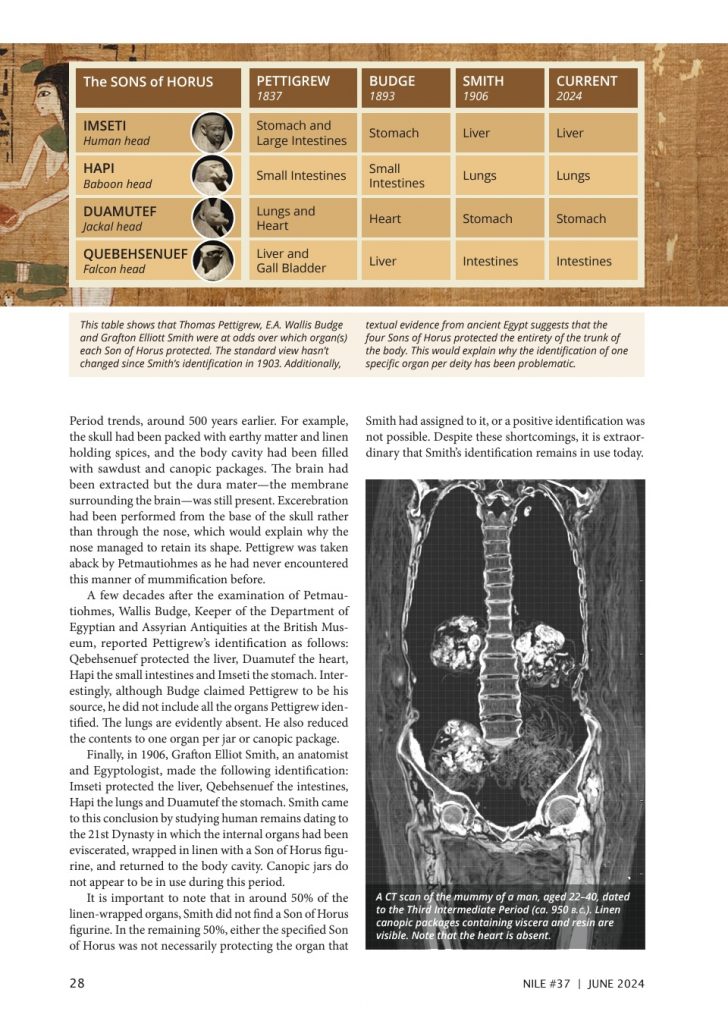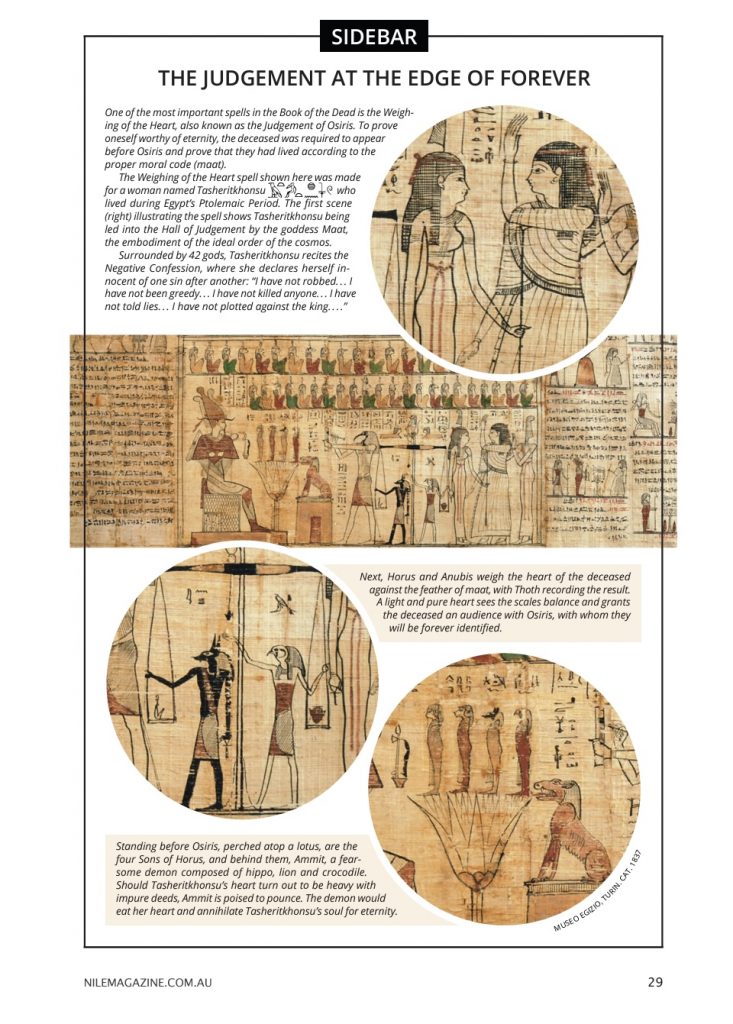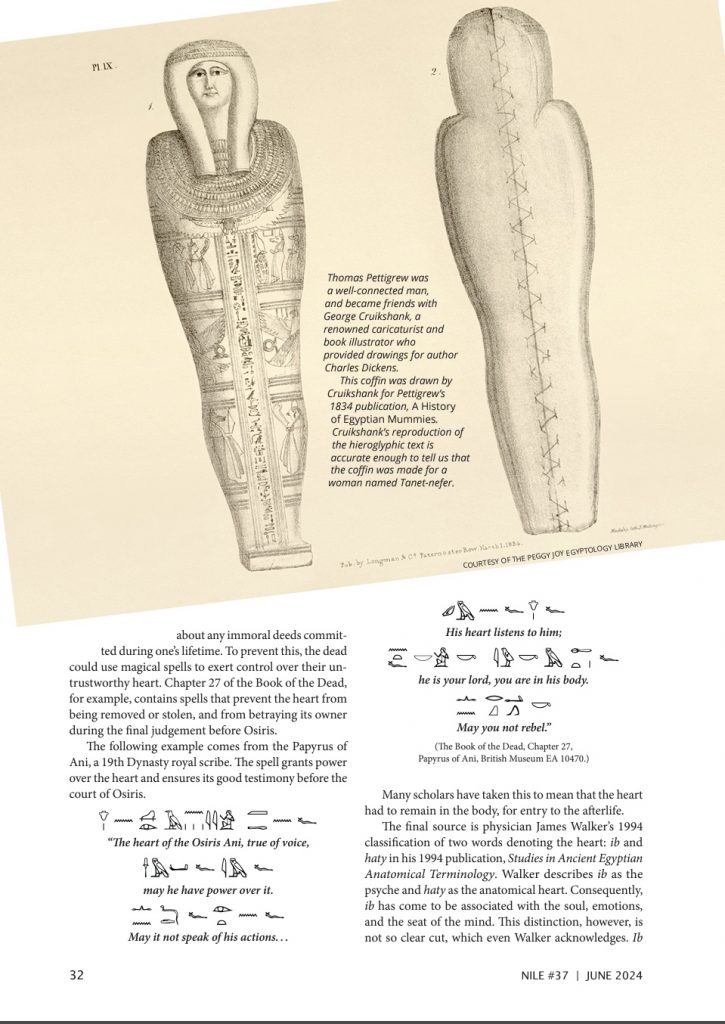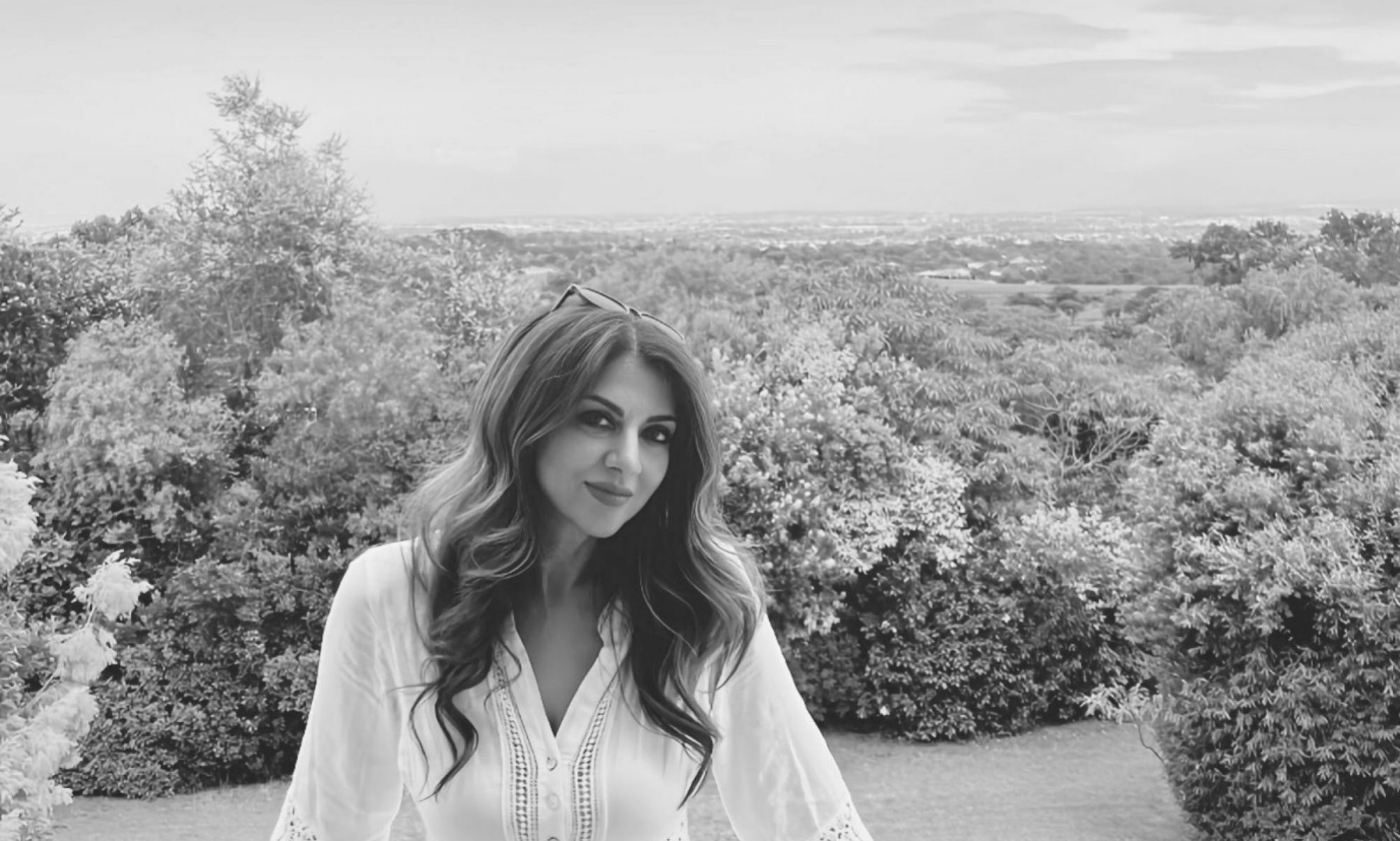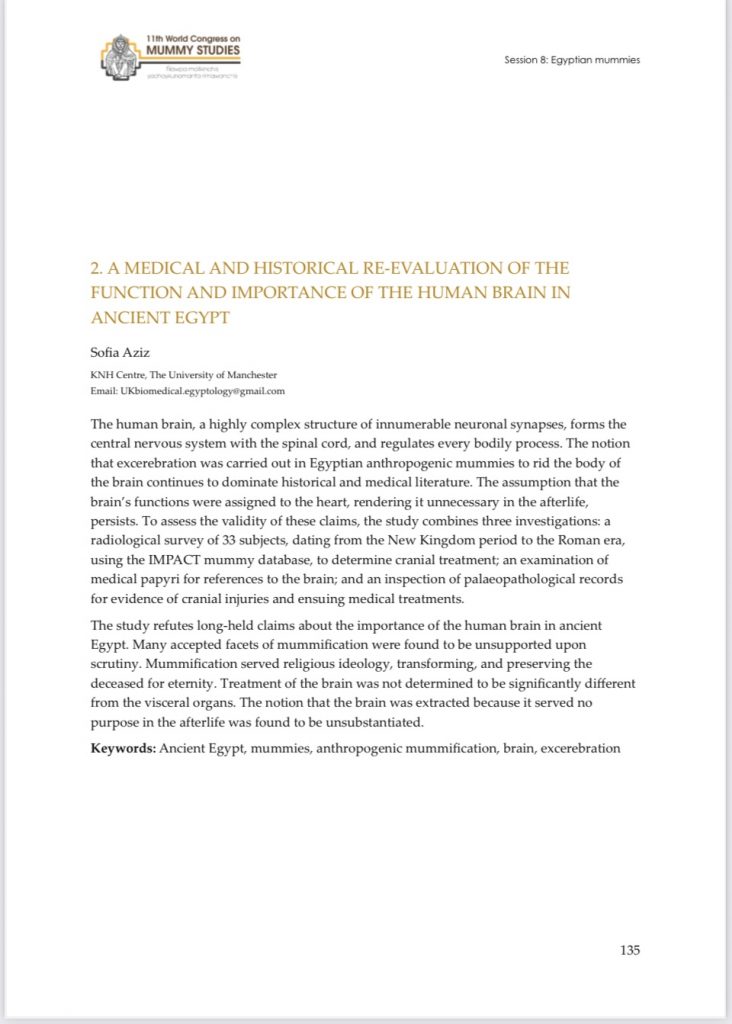One claim regarding Tutankhamun continues to dominate the literature and media: his mummification was “unusual” because his heart was absent. The implication? That the heart was essential to remain in the body, and its absence suggests Tutankhamun died far from home. This theory, intrigued me enough to investigate its origins during my dissertation research.
I discovered that the notion of retaining the heart during embalming originates from Grafton Elliot Smith’s early 20th-century observations of heart preservation in some mummies from the Twenty-First Dynasty.
More recently, Wade and Nelson’s study challenged this assumption, showing that the heart was frequently absent and that heart amulets did not consistently accompany or symbolically replace it (Wade & Nelson, 2013: 4202).
My own analysis of 33 anthropogenic mummies yielded similar results. Heart retention was confirmed in only 21% of the subjects, while 9% had partial heart retention. In 28% the presence or absence of the heart was indeterminate due to obstructive packing material. Strikingly, 42% of the subjects exhibited no heart retention at all (Aziz, 2023: 37).
Crucially, I found there is a lack of textual evidence from ancient Egypt indicating that heart retention was a ritual necessity. Instead, the belief appears to be a modern construct, shaped by four key sources:
• Diodorus Siculus (c. 30–90 BCE): The Greek historian claimed embalmers removed all organs except the kidneys and heart. Yet he offered no rationale, and modern imaging has shown his account to be anatomically inaccurate.
• Grafton Elliot Smith (1906): Smith’s anatomical studies led him to generalise Diodorus’s claim across all dynasties. He wrote:“In all cases the heart is left in the thorax attached to the great blood vessels… This striking confirmation of the statement of Diodorus has not, so far as I am aware, been recognised hitherto.”
However, larger-scale studies have since disproven this generalisation.
• The Book of the Dead: Spell 30B, which implores the heart not to speak against the deceased, has been interpreted by some scholars as evidence that the heart needed to remain in the body for successful passage to the afterlife. Yet this is a symbolic reading, not a surgical prescription.
• Walker’s classification of ‘ib’ and ‘haty’: Walker distinguishes between ‘ib’ (psyche) and ‘haty’ (anatomical heart), but acknowledges their interchangeable use in Egyptian texts. Both terms appear in the Ebers Papyrus (c. 1550 BCE) in contexts that blur anatomical and emotional meanings, reminding us that even today, the heart remains a metaphor for emotion and identity (Aziz, 2023: 16-19).
In short, the notion that the heart was ritually indispensable during mummification is not grounded in ancient Egyptian textual or archaeological evidence. It is a modern myth, stitched together from selective readings and retrospective interpretations.
I was honoured to present my findings at the XI World Congress on Mummy Studies – Cusco 2025.
For an in-depth analysis, see my article “Vital Organs” in Nile Magazine or my book “The Human Brain in Ancient Egypt: A Medical and Historical Analysis of Its Function and Importance”
References
Aziz, S. (2023) The Human Brain in Ancient Egypt: A Medical and Historical Re-evaluation of Its Function and Importance, Archaeopress
Smith, G.E. (1906) Sous Les Auspices de Abbas II: A Contribution to the Study of Mummification in Egypt, With Special Reference to the Measure Adopted During the Time of the XXI Dynasty for Moulding the Form of the Body, Le Caire
Wade, A.D., Nelson, A.J. (2013) Evisceration and Excerebration in the Egyptian Mummification Tradition, Journal of Archaeological Science 40, Elsevier Ltd
Walker, J. (1993) Studies in Ancient Egyptian Anatomical Terminology, School of History, Philosophy and Politics, Macquarie University, N.S.W., Australia


